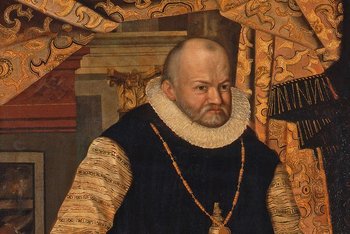quote
With its magnificent ceremonial weapons, costumes and props for feasting and hunting, war and peace at the Renaissance and Baroque courts, the Armoury in the Royal Palace presents unique facets of the history of Saxony, Europe and the world.
With its magnificent ceremonial weapons, costumes and props for feasting and hunting, war and peace at the Renaissance and Baroque courts, the Armoury in the Royal Palace presents unique facets of the history of Saxony, Europe and the world.


The Rüstkammer is the oldest collection of the Staatliche Kunstsammlungen Dresden. Under Duke George the Bearded (r. 1500-1539), who made Dresden his main residence, there is evidence of the "Ducal Armoury" in the Royal Palace. Elector August (r. 1553-1586) had the armoury („Herzogliche Harnischkammer“) inventoried for the first time in 1567. It mainly contained the personal and tournament weapons of the Albertine dukes and electors. At that time, the greatly increased stock was mainly housed in the Royal Palace.

In 1586, Elector Christian I (r. 1586-1591) laid the foundation stone for a magnificent building for the 128 electoral personal horses and the armoury, the "Neuer Stall". The precious holdings of the armoury were presented in 28 "chambers" on the upper floors. They testified to the wealth and power of the Saxon Electorate. In 1722, the Armoury had to vacate the stable building and remained in the neighbouring "Geheime Kriegskanzlei" until 1832. After the Kunstkammer had been dissolved and part of its holdings incorporated into the Rüstkammer, the collection, now called the "Königliches Historisches Museum", moved into rooms in the Zwinger.

In 1877, the collection returned to the original stable building, today's Johanneum. The extensive firearms collection had been on display in the Long Corridor at the Stallhof since 1733.
Moved out of storage between 1939 and 1944, the collections were largely taken to the Soviet Union after the end of the war in 1945, where they remained until 1958. Between 1959 and 2012, part of the Armoury, renamed in 1992, was exhibited in the Semper Building of the Zwinger. With the reconstruction of the Royal Palace and the Long Corridor, the museum has finally returned to the places of its origin and can once again present itself as one of the world's most important collections of historical state weapons and costumes.